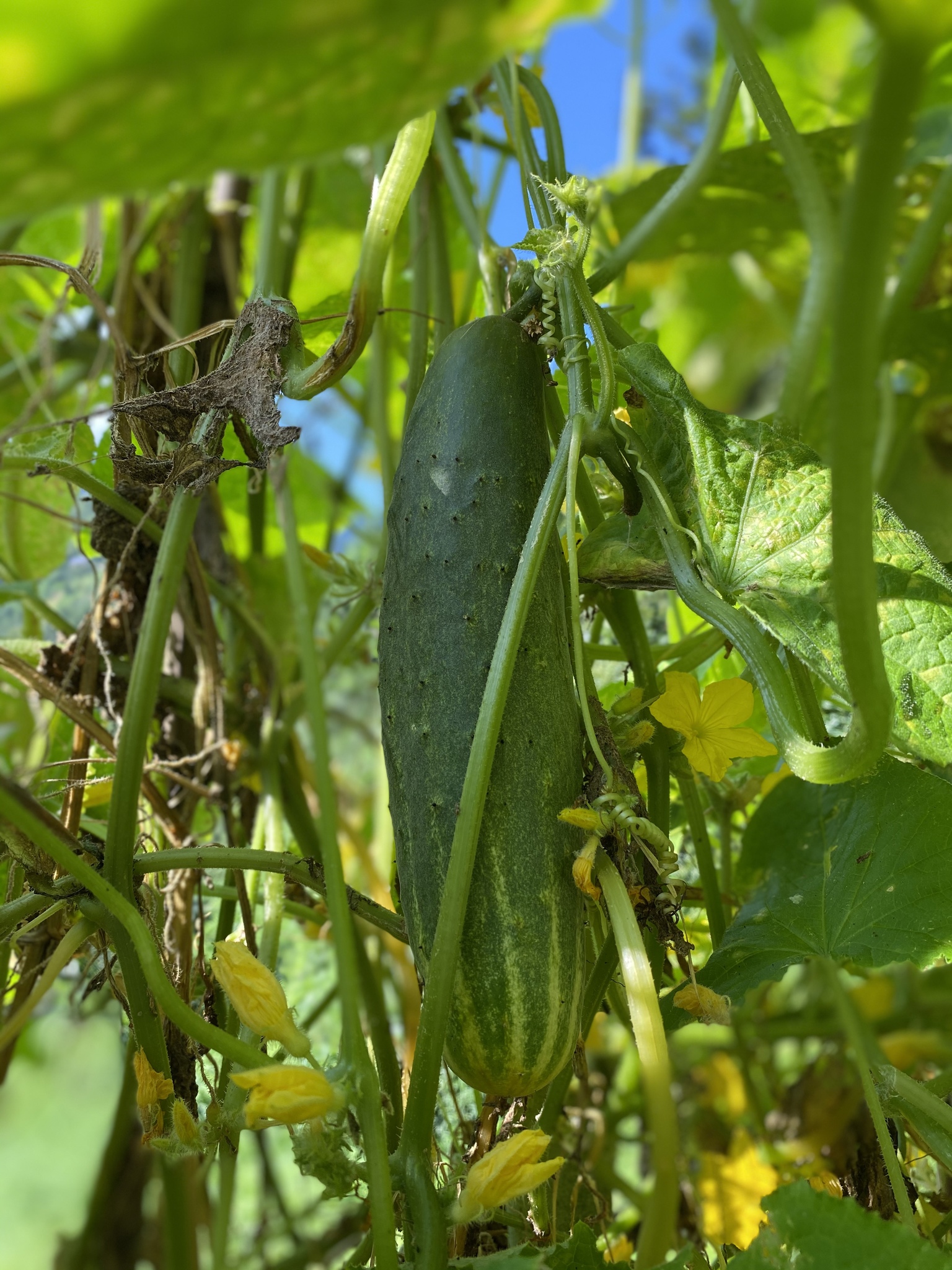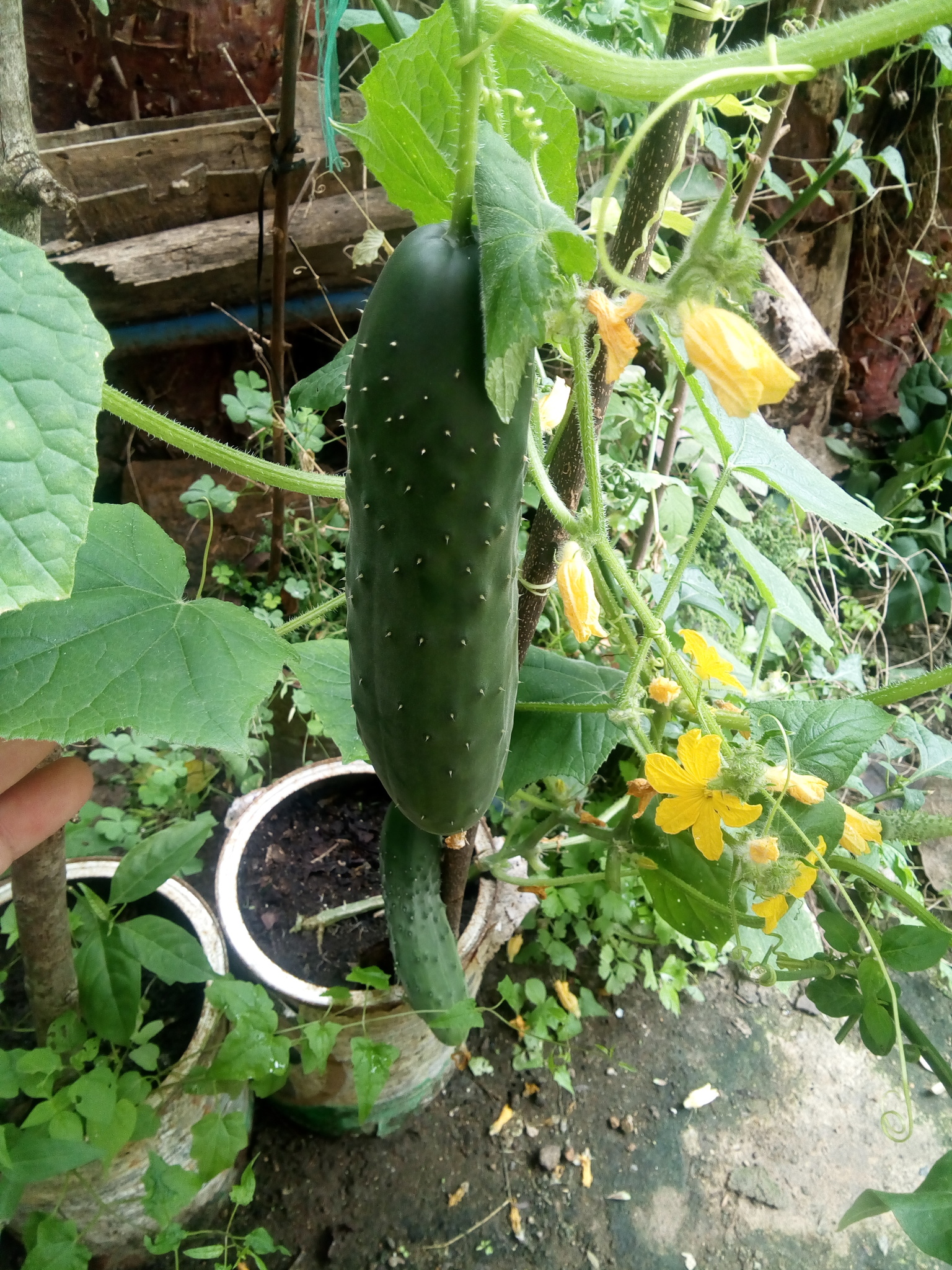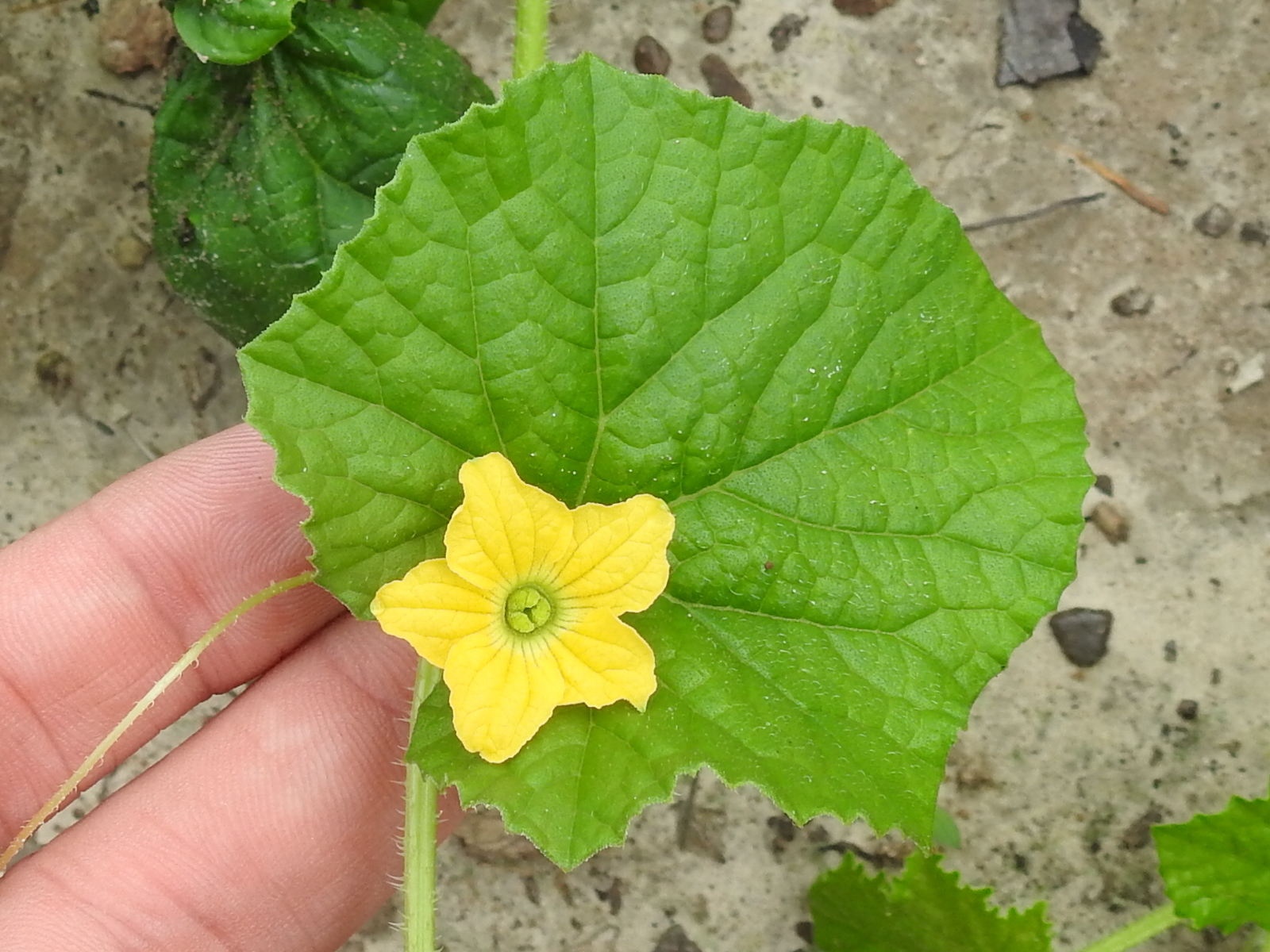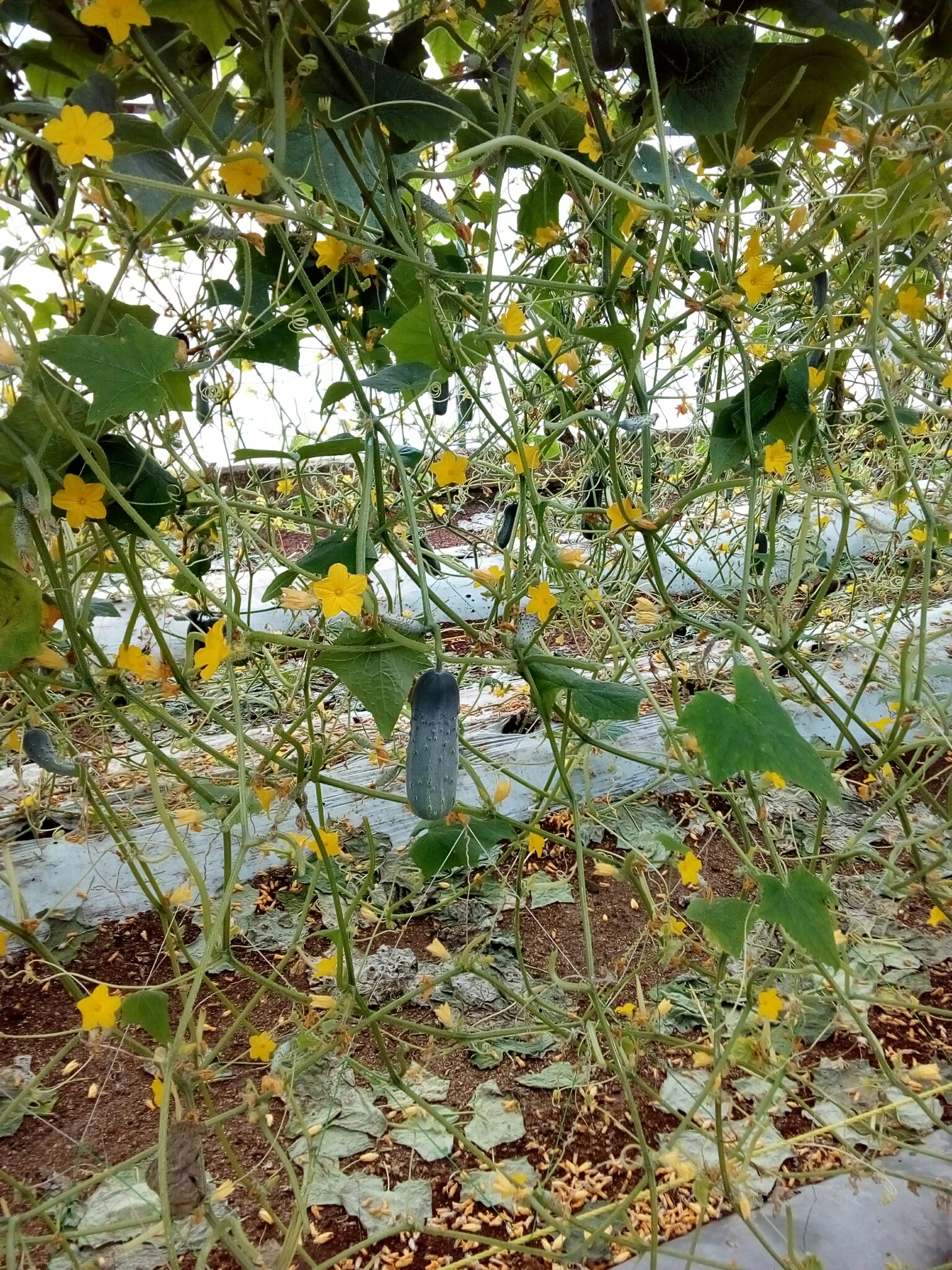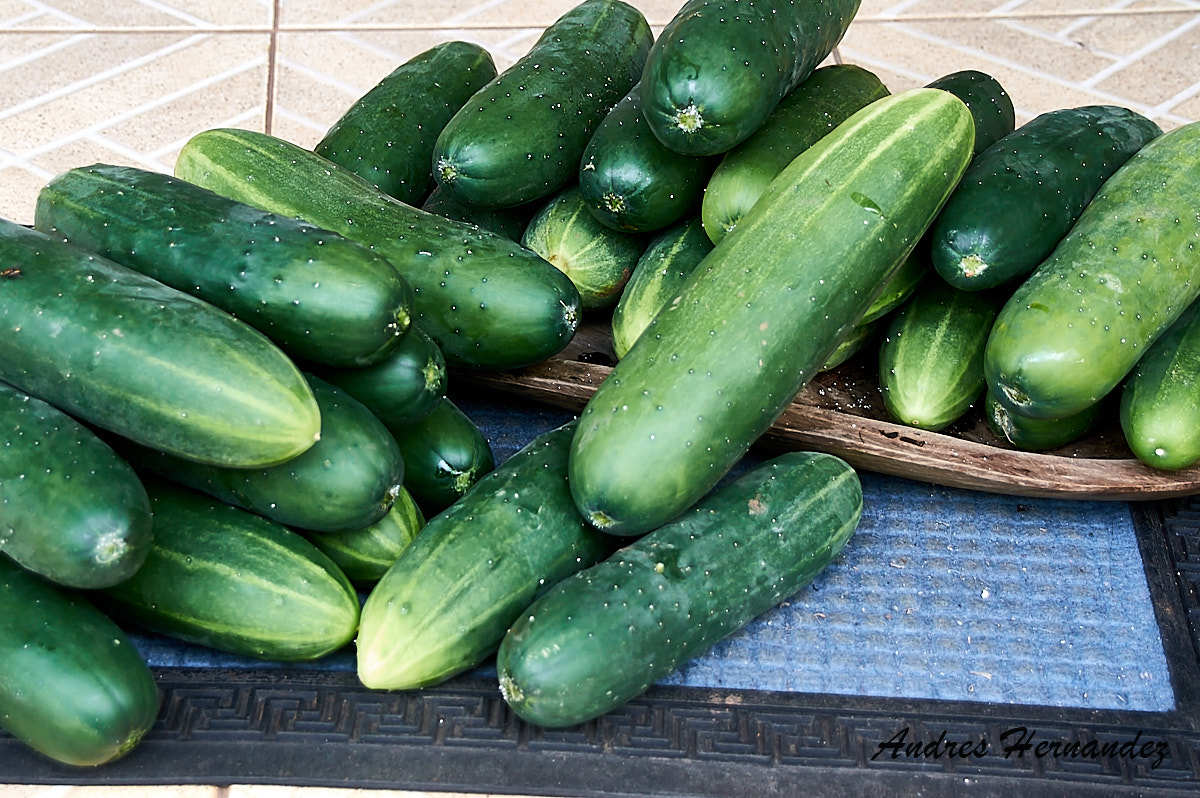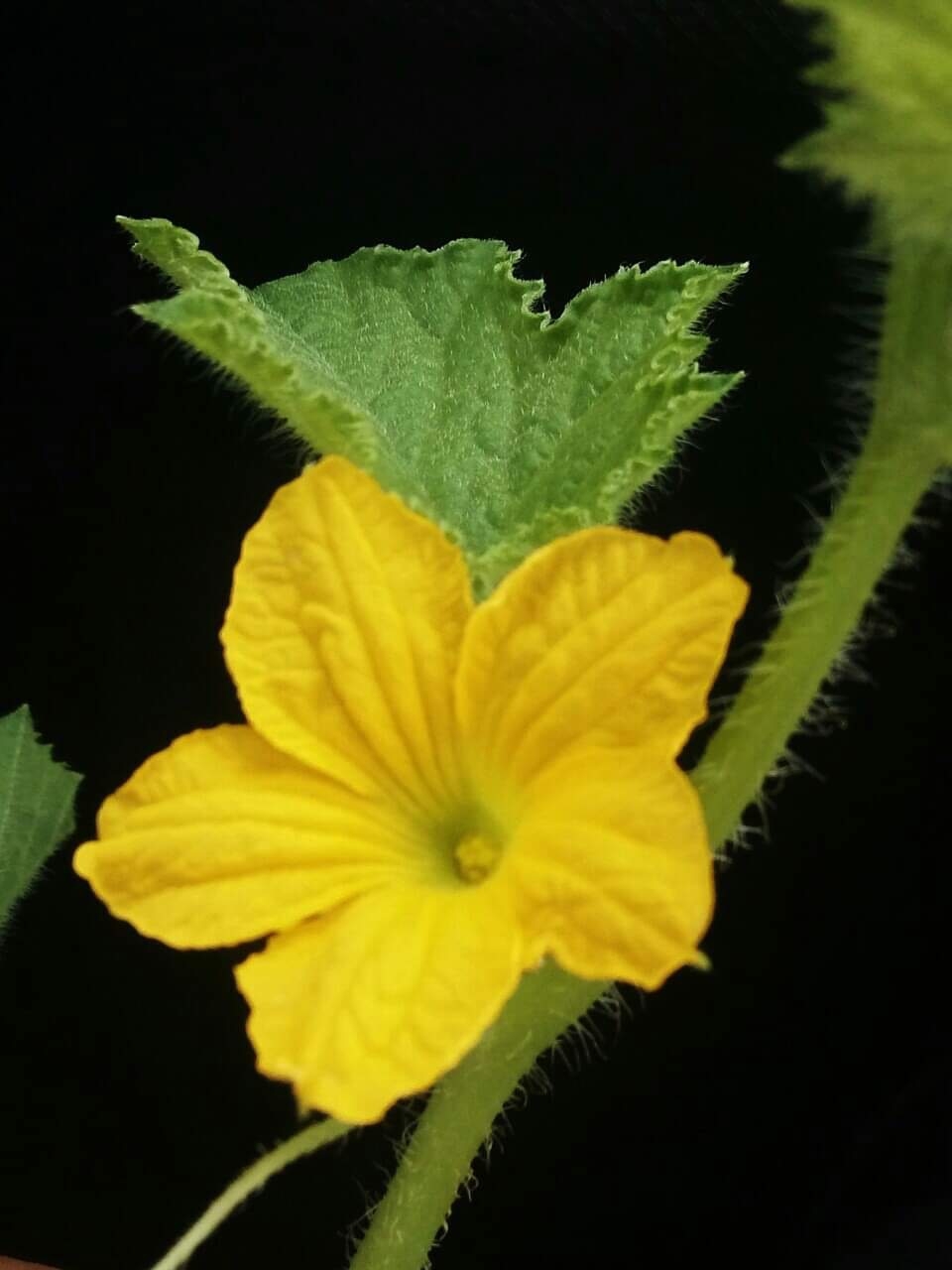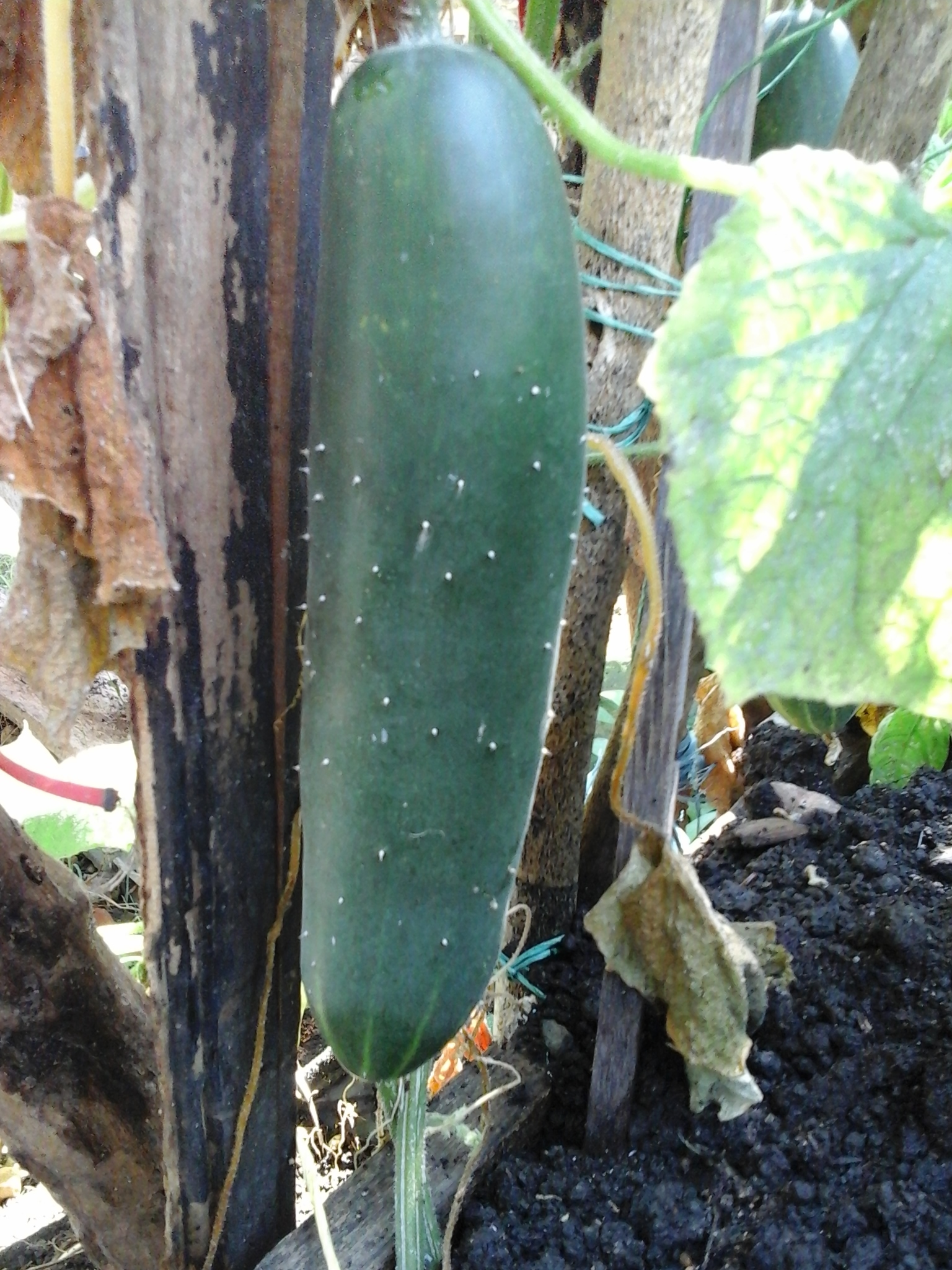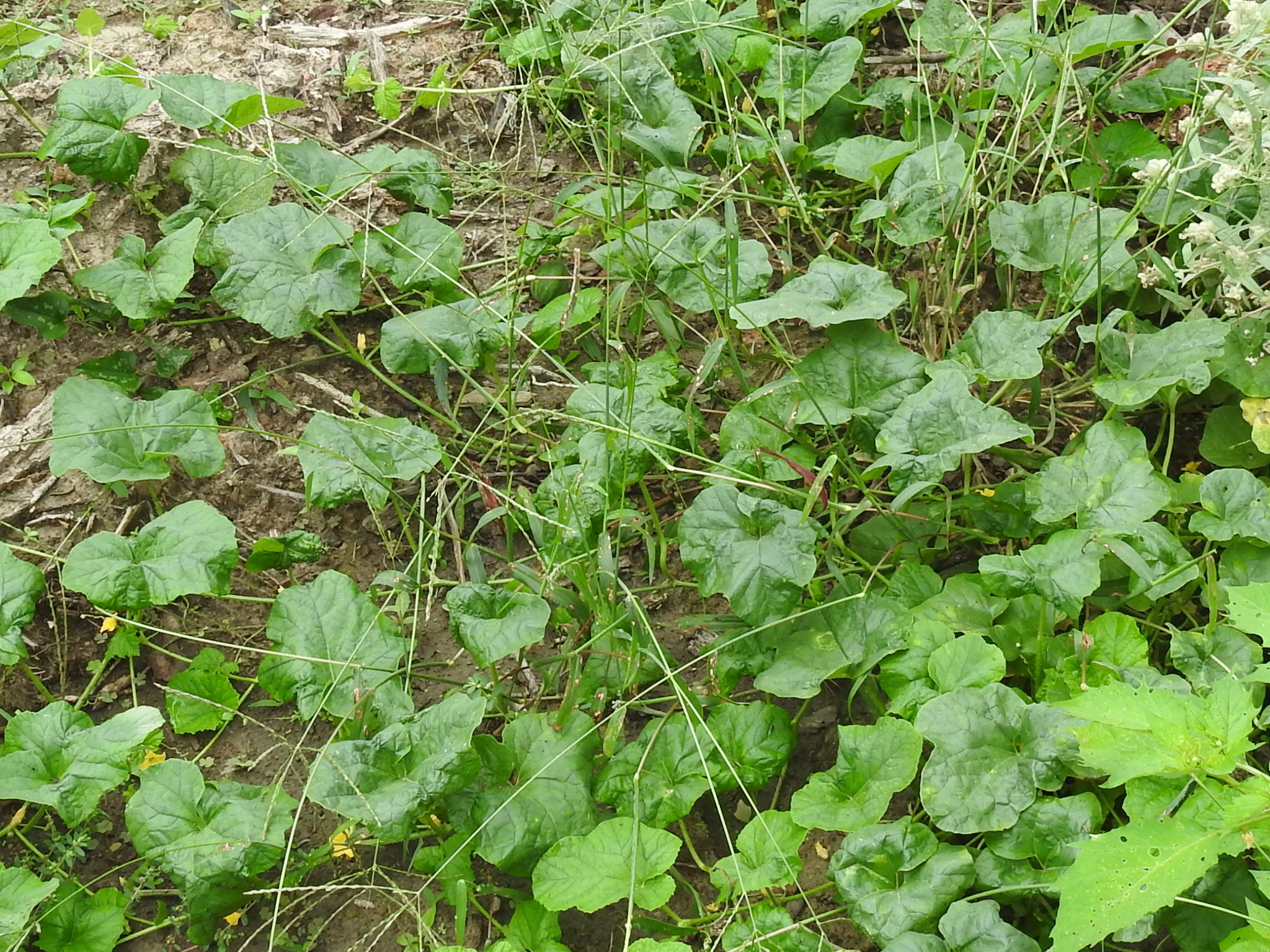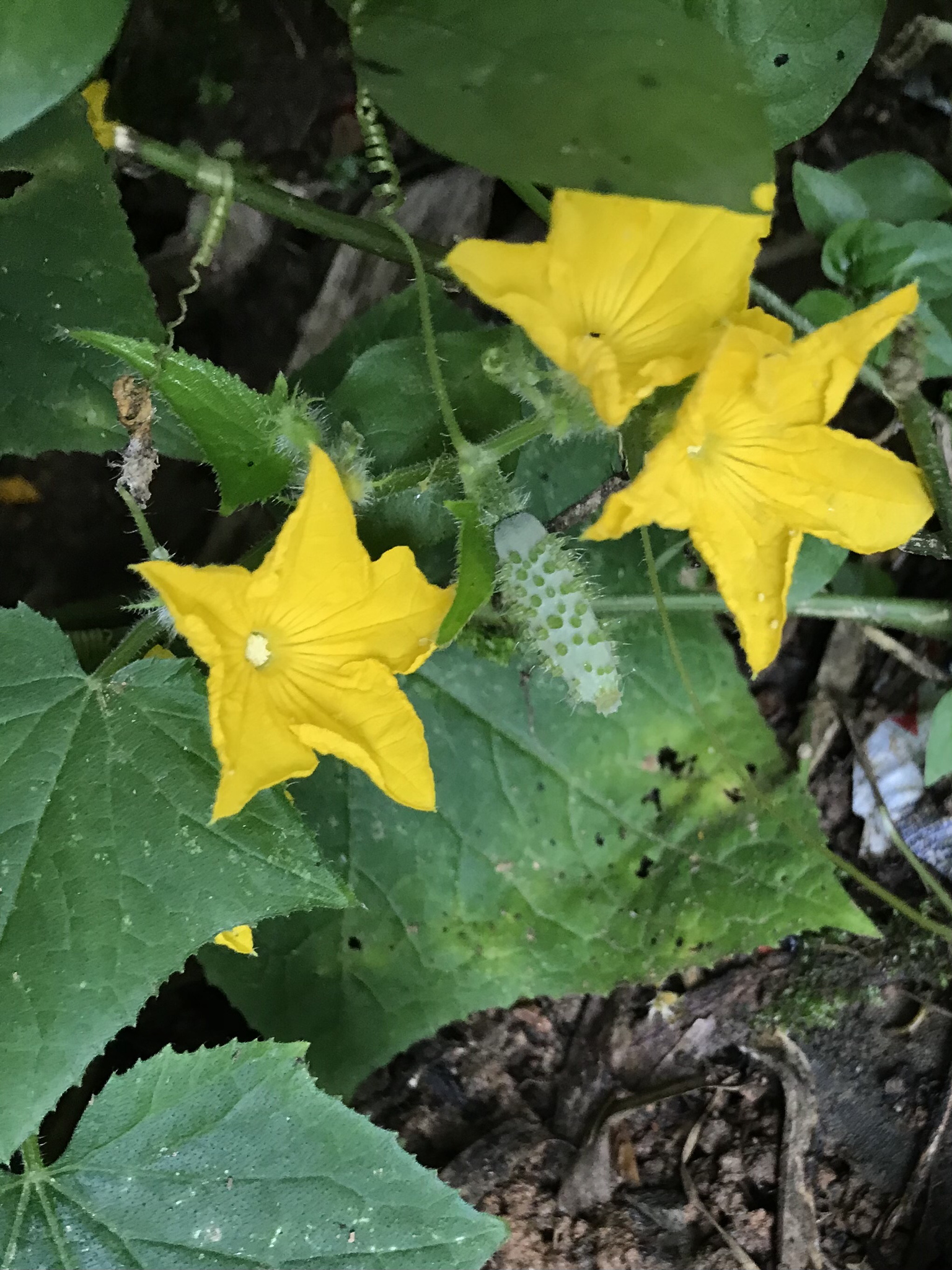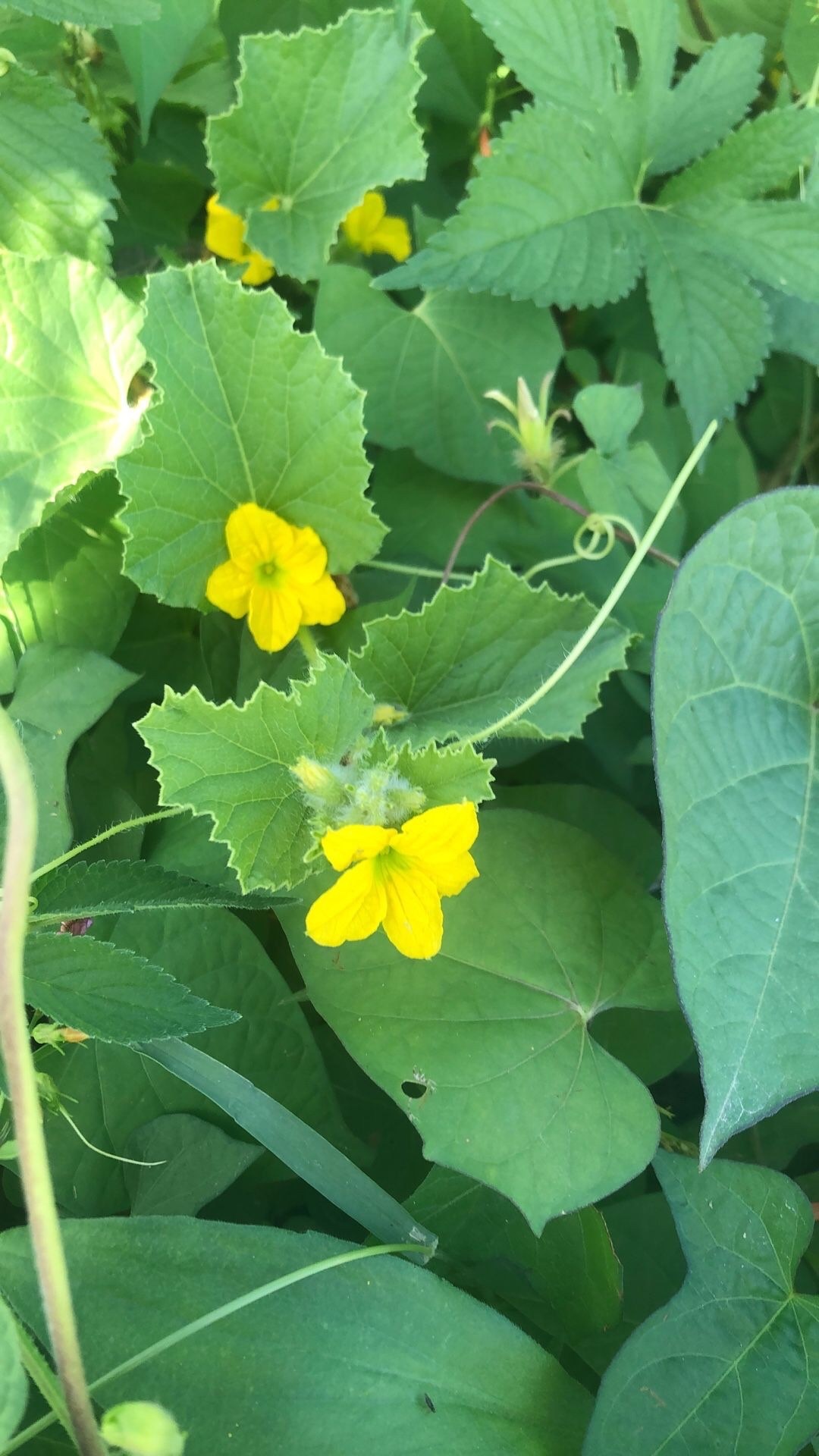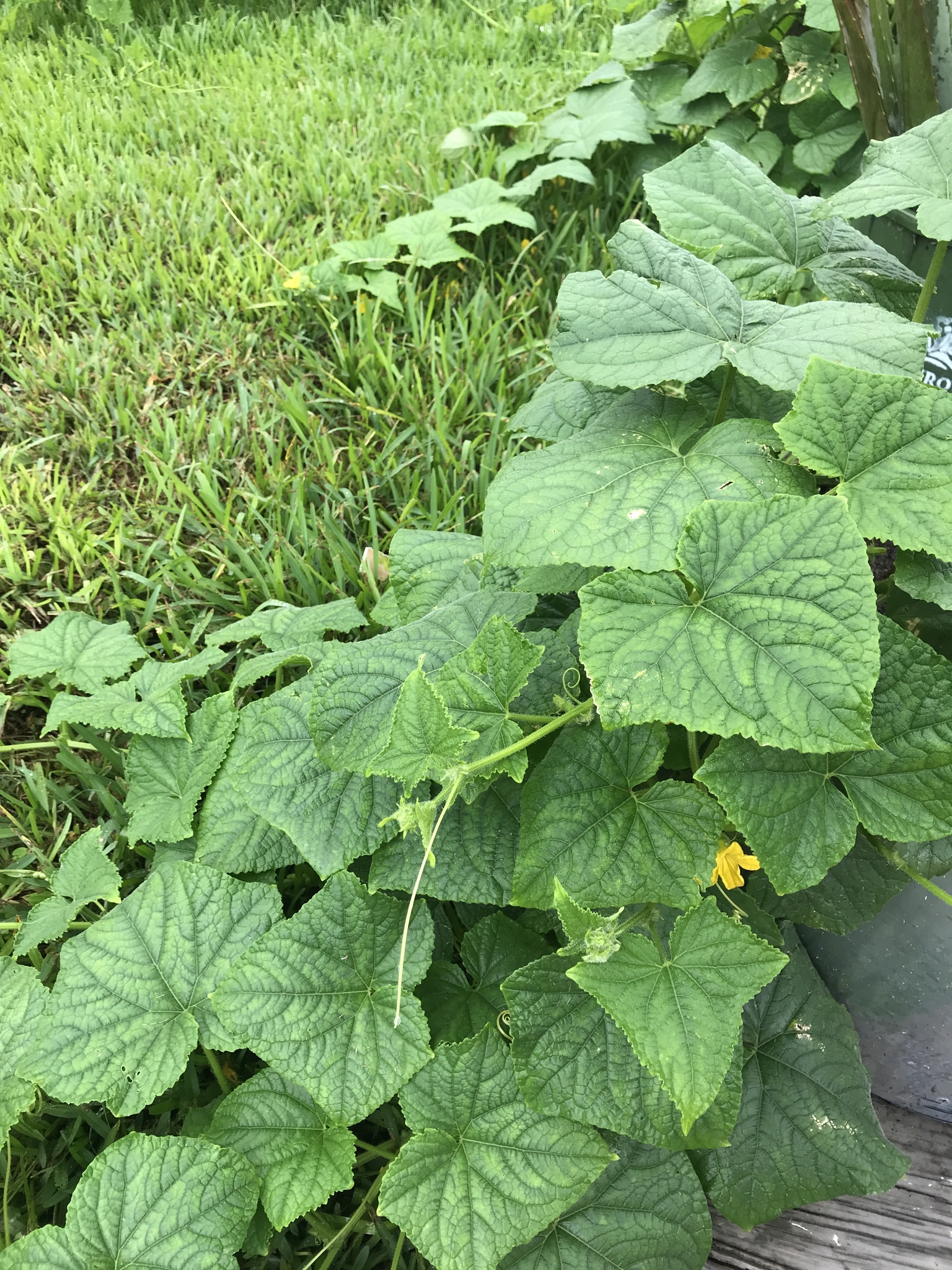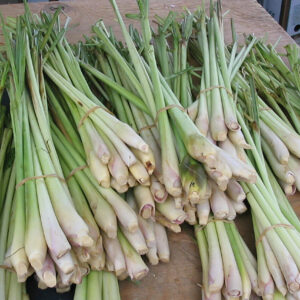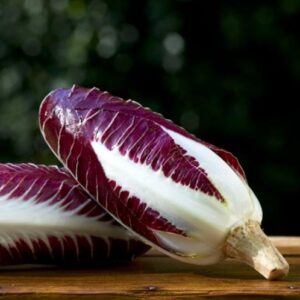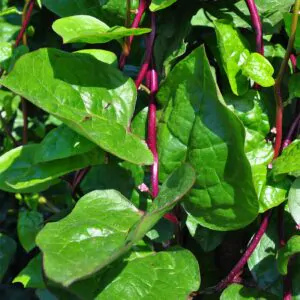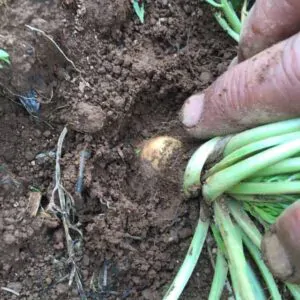Description
Cucumber (Cucumis sativus) is a widely-cultivated creeping vine plant in the Cucurbitaceae family that bears usually cylindrical fruits, which are used as vegetables. Considered an annual plant, there are three main varieties of cucumber — slicing, pickling, and burpless/seedless — within which several cultivars have been created. The cucumber originates from South Asia, but now grows on most continents, as many different types of cucumber are traded on the global market. In North America, the term wild cucumber refers to plants in the genera Echinocystis and Marah, though the two are not closely related.
The cucumber is a creeping vine that roots in the ground and grows up trellises or other supporting frames, wrapping around supports with thin, spiraling tendrils. The plant may also root in a soilless medium, whereby it will sprawl along the ground in lieu of a supporting structure. The vine has large leaves that form a canopy over the fruits.
The fruit of typical cultivars of cucumber is roughly cylindrical, but elongated with tapered ends, and may be as large as 62 centimeters (24 in) long and 10 centimeters (4 in) in diameter.
Cucumber fruits consist of 95% water (see nutrition table). In botanical terms, the cucumber is classified as a pepo, a type of botanical berry with a hard outer rind and no internal divisions. However, much like tomatoes and squashes, it is often perceived, prepared, and eaten as a vegetable.
Most cucumber cultivars are seeded and require pollination. For this purpose, thousands of honey beehives are annually carried to cucumber fields just before bloom. Cucumbers may also be pollinated via bumblebees and several other bee species. Most cucumbers that require pollination are self-incompatible, thus requiring the pollen of another plant in order to form seeds and fruit. Some self-compatible cultivars exist that are related to the ‘Lemon’ cultivar.
A few cultivars of cucumber are parthenocarpic, the blossoms of which create seedless fruit without pollination, which degrades the eating quality of these cultivar. In the United States, these are usually grown in greenhouses, where bees are excluded. In Europe, they are grown outdoors in some regions, where bees are likewise excluded.
Traditional cultivars produce male blossoms first, then female, in about equivalent numbers. Newer gynoecious hybrid cultivars produce almost all female blossoms. They may have a pollenizer cultivar interplanted, and the number of beehives per unit area is increased, but temperature changes induce male flowers even on these plants, which may be sufficient for pollination to occur.
In 2009, an international team of researchers announced they had sequenced the cucumber genome.
